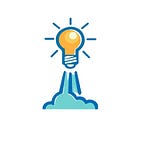Fixed Costs vs. Variable Costs
If you own a business or are an aspiring entrepreneur, it is vital to understand the two types of costs your business will have: fixed costs and variable costs. Fixed and variable costs are expenses that live on the income statement and reveal quite a bit about a company’s profitability. Analyzing variable costs, in particular, can help businesses make important decisions about how to price their products and which products to make more of.
What is a Fixed Cost?
Fixed costs are those expenses that remain relatively constant throughout your business activity. This would mean you don’t have to worry about these costs increasing whether your business is selling more than normal — or less.
Examples of fixed costs include:
- Building Rent
- Insurance Payments
- Subscription Fees
- Utilities Payments
The most significant benefit of fixed costs is they are easy to budget. You know over each period what these costs will be, and you don’t need to make any budget accommodations if production increases suddenly.
What Are Variable Costs?
Variable costs are the opposite of fixed costs, as they’re susceptible to change over time. These costs are related to how many goods your business is producing for that period, meaning the more goods your company creates, the higher your variable costs will be.
Some examples of variable costs are:
- Sales Commissions
- Shipping Costs
- Hourly Labor Costs
- Raw Materials
Variable costs are less predictable to a business owner, though they do typically go up or down in relation to production. If your company makes furniture and receives a big order, it will see an increase in expenses like wood, sandpaper, and other materials that are needed to craft a piece of furniture. How much of those materials you buy is dependent on the demand for your products. This is why it’s essential to forecast your business expenses ahead of time and make sure you leave room in your budget to accommodate for an increase in variable costs.
How Do Variable and Fixed Costs Apply to Accounting?
Accounting for these costs falls under the umbrella of managerial accounting, or the accounting that your leadership uses to track how the business is doing and make decisions. Both of these costs live on the income statement but aren’t broken down, making it difficult to estimate how much it actually costs to run your business.
Because of this, the ability to differentiate between the two types of costs is vital. By understanding what kind of expenses fall into the two different buckets and how those play a part in your business’s total costs, management can modify your spending to hit your set budgets as well as forecast how much that period will cost.
To clearly understand how fixed and variable costs play a part in running your business, you must understand how the total cost is calculated. Knowing the fundamentals behind your total cost allows you to know exactly where you need to adjust spending in your business to be within your budget. For reference the calculation for total costs is:
Total Cost = (Variable Cost per Unit x Number of Units) + Fixed Costs
Say you’re the owner of a ceramics studio. Your studio’s variable costs are the supplies you use to make and ship your pots such as clay, glaze, carving equipment, and packaging. During the holiday months, you see demand for your products increase, and you make 500, each costing you $50 to make. This means your total variable cost is $25,000 (500 x $50 = $25,000).
On the opposite end, your fixed costs consist of rent for your studio, utility payments, and your assistant’s salary. This consistently adds up to $15,000 per month. By knowing these expenses, we are able to conclude that your studio’s total cost is $40,000.
($50 x 500) + $15,000 = $40,000.
By understanding the total cost (as well as all the individual variables used to calculate it), you can look for ways to bring down your total costs. For example, you might find that you can get clay from another supplier for less, bringing down your cost per unit to $45. Under those circumstances, your total costs would drop, as well.
($45 x 500) + $15,000 = $37,500
When you’re able to bring down your variable costs, those savings start to add up.
A Benefit of Knowing Your Businesses Costs
A benefit of knowing what your fixed and variable costs are is it gives you the ability to find your break-even point, which is a must if you want to become profitable. Here’s how to calculate it:
Break-Even Point = Fixed Costs / (Selling Price — Variable Costs Per Unit)
Using the example of our ceramics studio, say you are thinking of pricing the pots at $90. Since the variable cost per unit is $50 and fixed costs are $15,000, the breakeven point would be at pot 375.
$15,000 / ($90 — $50) = 375 Pots
In other words, in order for the studio to break even, you would need to produce at least 375 pots. Any pot made after that point would be considered profit for the business.
Break-even analysis allows you to make many decisions like how to price your products, whether to look for lower-cost ways to produce them, or whether new product ideas are worth introducing.
It’s always a good idea to be aware of all of the different types of expenses you have within your business. Both fixed cost and variable costs play a crucial part in the health and growth of your business. If you’re feeling overwhelmed with managing and tracking variable and fixed costs, there are solutions that can help you. Learn how we can help by requesting a demo with a StartLightSoft expert today.
